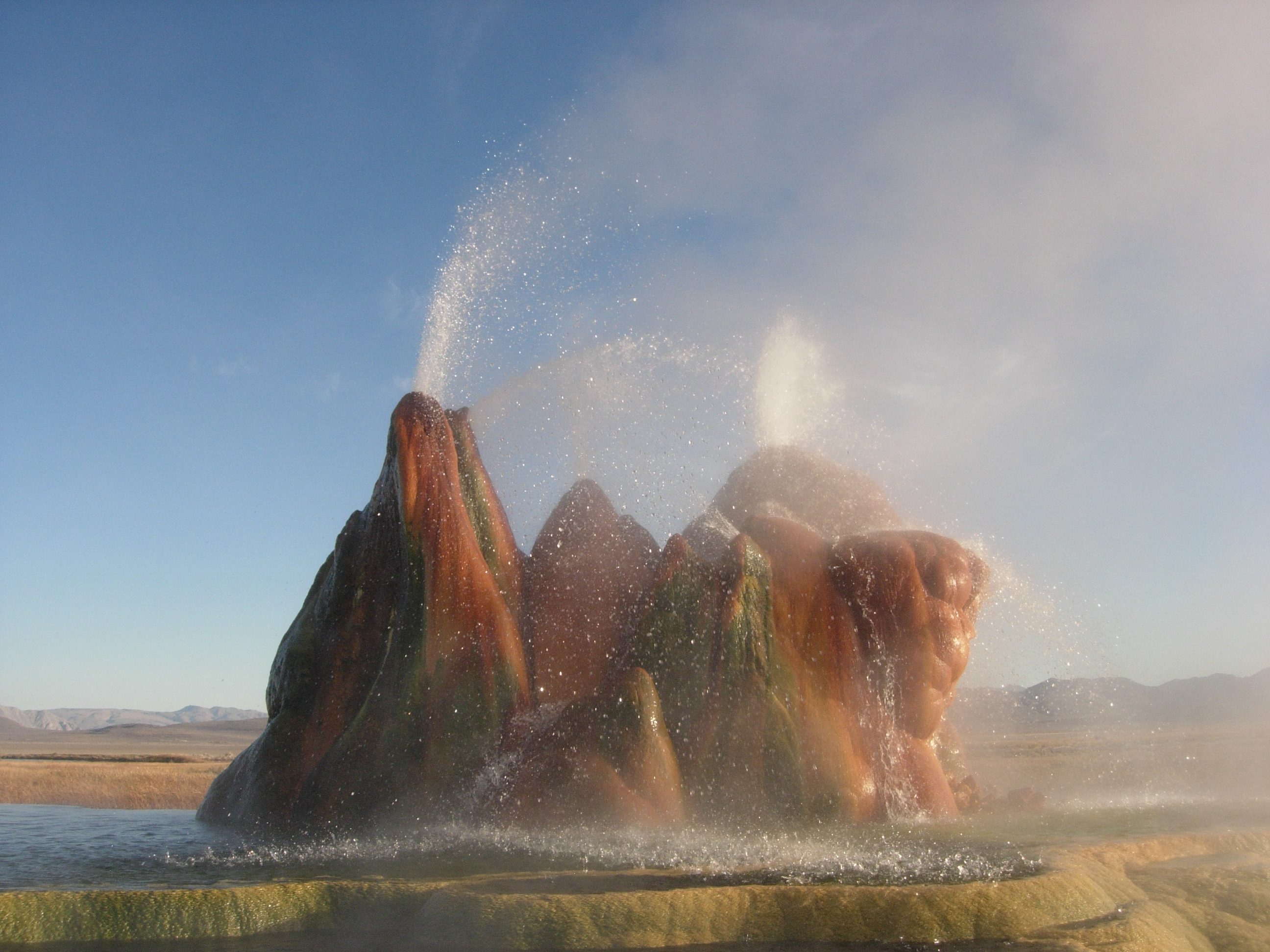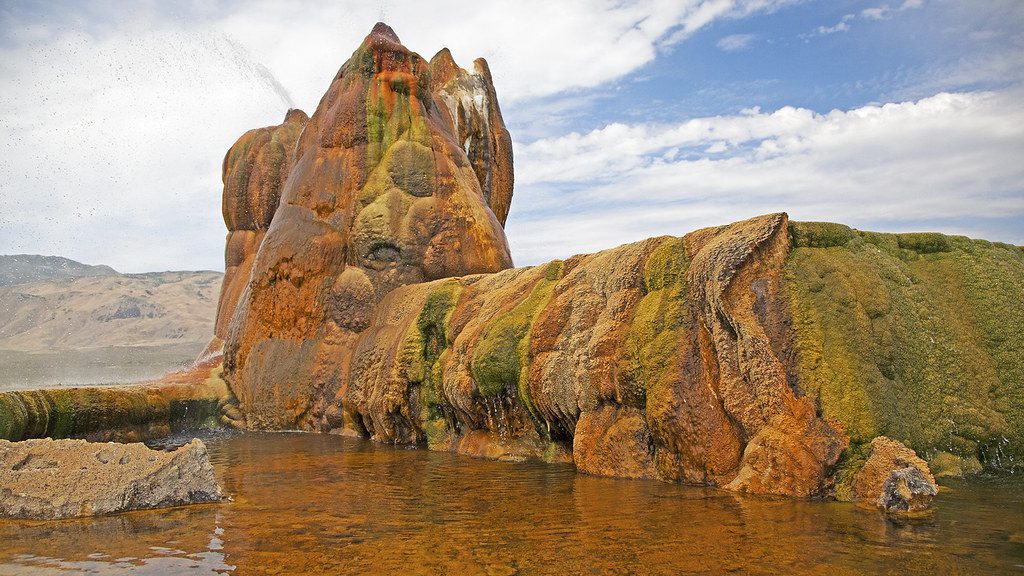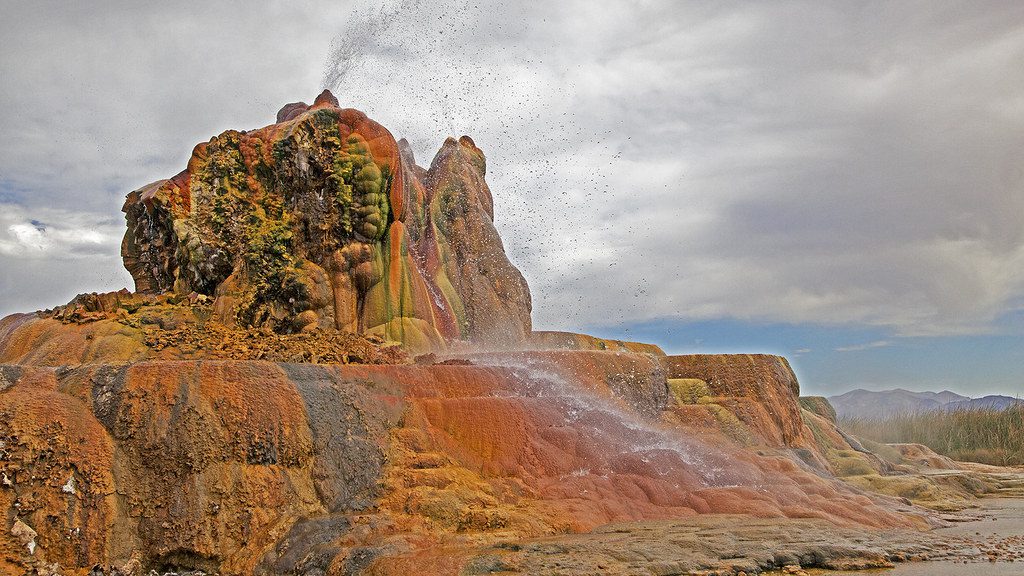Fly Geyser is located on the Fly Ranch in Hualapai Flat, about 0.3 miles (0.48 km) from State Route 34 and about 25 miles (40 km) north of Gerlach, Nevada. It is due east of Black Rock Desert.
The source of the Fly Geyser field’s heat is attributed to a very deep pool of hot rock where tectonic rifting and faulting are common.The first geyser at the site was formed in 1916 when a well was drilled seeking irrigation water. When geothermal water at close to the boiling point was found, the well was abandoned, and a 10–12-foot (3.0–3.7 m) calcium carbonate cone formed.

In 1964 a geothermic energy company drilled a second well near the site of the first well. The water was not hot enough for energy purposes. They reportedly capped the well, but the seal failed. The discharge from the second well released sufficient pressure that the original geyser dried up. Dissolved minerals in the water, including calcium carbonate and silica, accumulated around the new geyser, creating the cones and travertine pools.
The temperature of the water exiting the geyser can exceed 200 °F (93 °C), which is typical for geysers at high elevation. Carolina Muñoz Saez, who was hired by the Burning Man owners to study the geyser, reported that the geyser contains “a really high amount of silica.” The silica combined with the temperature has caused quartz to form inside the geyser extraordinarily quickly. Quartz typically takes up to 10,000 years to develop in geysers. Saez said the Fly Geyser is unlike any other geyser she has studied.

Water is constantly released, reaching 5 feet (1.5 m) in the air. The geyser has formed several travertine terraces, creating 30 to 40 pools over an area of 74 acres (30 ha). The water produced by the geyser contains thermophilic algae, which flourish in moist, hot environments, coloring the rocks with brilliant hues of green and red.
According to en.wikipedia. Source of photos: internet








